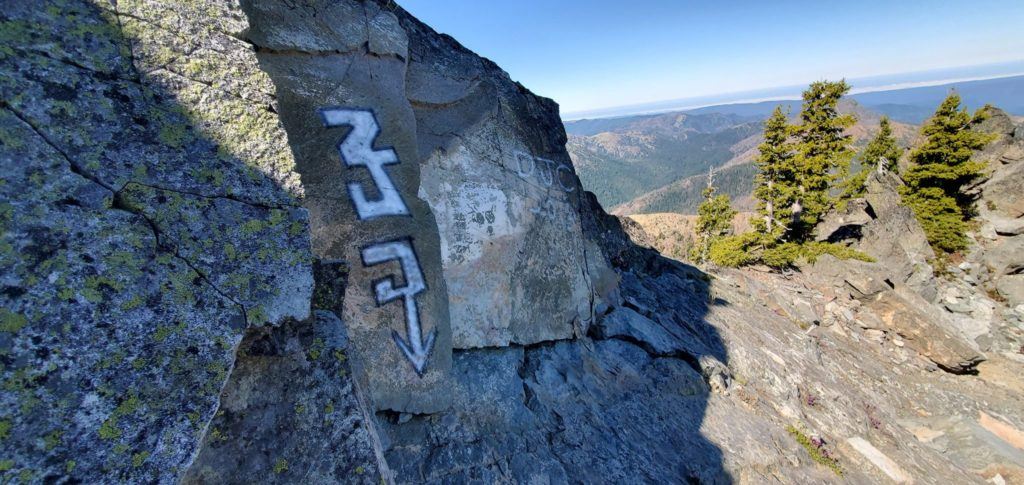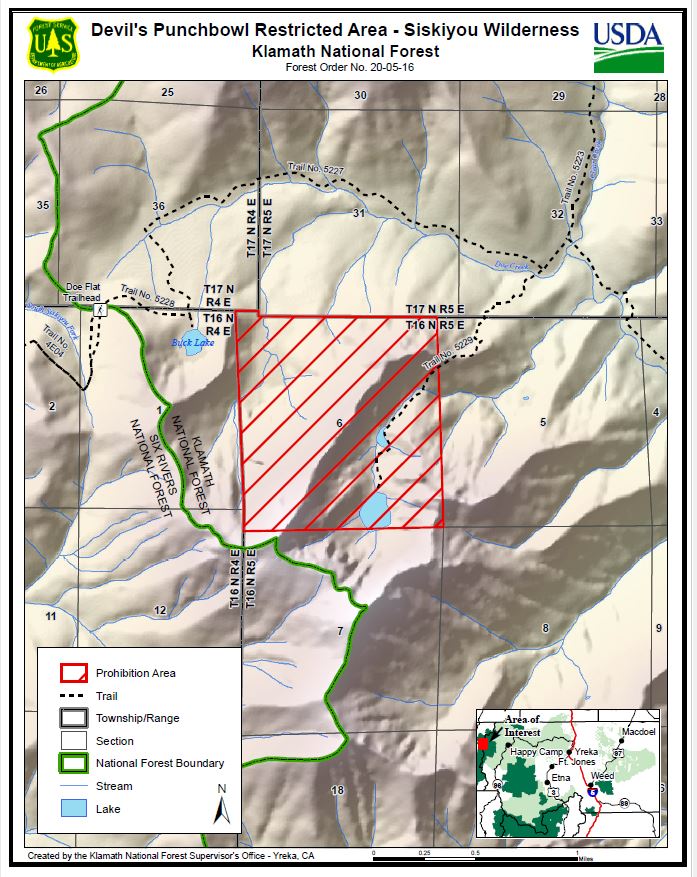New backcountry restrictions have been put in place to limit environmental impacts in the wilderness, including two high-use, sensitive areas in the Siskiyou and Trinity Alps wilderness areas.

In a move that has been a long time in the making, the Klamath National forest has enacted restrictions in two of the most visited backcountry destinations on the forest. This action could not have been more timely, as more people are visiting the backcountry this year than ever before. Signs are going to be posted immediately — though in a recent informal survey few visitors to the Siskiyou Wilderness even read the signs at the trailhead.
There have been numerous reports of people behaving poorly in the wilderness this summer including graffiti on mountain summits, beer bottles being smashed on rocks riverside, and groups of over 25 people gathering to play Frisbee on sensitive meadow systems. We need to continue to work with the forest service to provide outreach and education about Leave No Trace in these places we love.

Thanks to everyone involved in making these restrictions a reality.
There is much more to be done.
Wilderness Area Restrictions Summary
- Using a campsite or any other area within the Siskiyou Wilderness, Marble Mountain Wilderness, or Russian Wilderness Areas by a group of more than 15 persons. 36 CFR 261.58(f).
- Using a campsite or any other area within the Trinity Alps Wilderness by a group of more than 10 persons. 36 CFR 261.58(f).
- Building, maintaining, attending a campfire within the following Restricted Areas, as described below and shown on the attached maps:
- Caribou Lakes Restricted Area. The boundary of the Caribou Lake Watershed Restricted Area begins at the northwest corner of Section 35, Township 37 North, Range 10 West, Mt. Diablo Base and Meridian, then continues east along the section line to its intersection with the northeast comer of Section 35, then continues south along the section line to its intersection with the southeast corner of Section 35, Township 36 1/2 North, Range 10 West, then continues west along the section line to the southwest corner of Section 35, then continues north along the section line back to the starting point.
- Devil’s Punchbowl Restricted Area. The Devil’s Punchbowl Watershed Restricted Area consists of all of Section 6, Township 16 North, Range 5 East, Humboldt Base and Meridian, as shown on the attached map.




Unfortunately, I am not personally familiar with these areas, and so I do not know their accessibility, primary user group (i.e. day trip or overnight), level of wilderness ranger presence, and the dynamics of their environmental, social and managerial setting characteristics. For example, management goals are often tailored to the setting, sometimes referred to as semi-primitive or primitive.
I would assume the Forest Service has previously taken steps to address these existing problems.
On the face of it, I have no issues with the group size limitations. Typically most wildernesses already have similar limits, so it is surprising that they either had non established or the threshold was higher. I would go further to say I am surprised they didn’t establish overall group size limits that apply to all activities, which would include trail use. Large groups are a problem with social encounters in areas where one has an expectation of some solitude. They are also more unwieldy and prone to off-trail impacts to mention a few problems.
But I would also say that the information provided to justify the restriction isn’t necessarily strong. Impacts such as cut trees, vandalism, and trash can often be the result of just a few individuals/groups and not an overuse problem addressed by limiting group size. Perhaps the trash and woodcutting is extensive beyond what a few individuals would do?
But the woodcutting issue does have ecological concerns. I know other wildernesses, such as those at higher elevation where trees are scant, often have a no campfire restrictions in place.
I didn’t fail to notice the comment about notices not being read. It’s all too true. Messages need to get out before they get to the trailhead if possible. And the areas need consistent, thorough, and effective on the ground presence by a wilderness ranger specialist.
I hope the Forest Service is successful as Wilderness is too valuable to squander.
Rene- Thanks for the thoughtful comment. The main justification for the fire restrictions is because of the lack of available wood. The Punchbowl, while at an overall lower elevation, has limited wood that has all been burned over the years. The Caribou basin is almost exclusively whitebark pine which may soon be listed as an endangered species. This was a good move by the forest service and for that we should all thank them.
I’m not personally familiar with the situation at Caribou Lakes, except to say that it’s one of the most popular destinations in the Trinity Alps. At Devils Punchbowl, no one has any business making wood fires. Timber is sparse, and the lake gets highly concentrated visitation. It’s a very sad situation what happened to the Alaska yellow-cedar there.
I feel that enforcement of restrictions is necessary. That requires more rangers. I’d be happy to to pay, say $10. for each trail that I hike – Dayhike – to contribute to having more rangers for enforcement. Some of the people who are disrespectful of the environment truly do care and lack education. Some of them don’t care and will only improve their behavior or stay out of sensitive areas if they’re required to have a day permit and there is enough policing to enforce that.
This year I’ve seen much garbage left at trailheads. I’m concerned.
I also feel that at lakes such Granite Lake in the Trinities, and many other lakes, it would be good to establish trails and signage asking people to stay ON a few specific trails to get to lakeshore then only use a trail that goes around the lake.
A restriction of no playing of music in the wilderness would also be appreciated.
Signage might include info that one must carry out their toilet paper.
Restrooms at more trailheads would also be good. All of this requires money, thus my idea of requiring day permits at a reasonable cost.
In clicking on “post comment” after entering my website, I’m asked for my URL: http://www.drjanetrueger.com
I will now attempt to send withOUT my website.